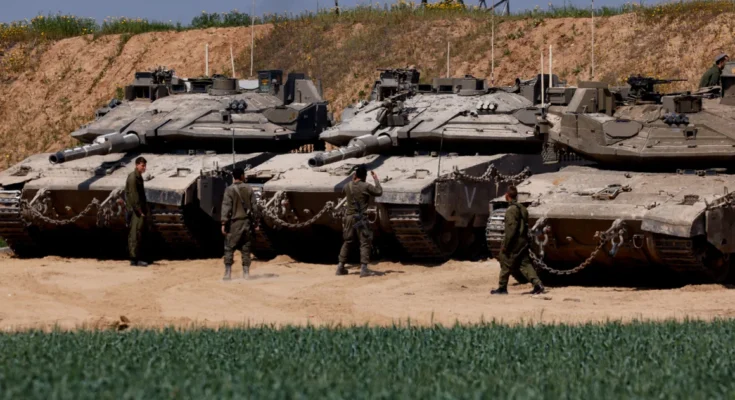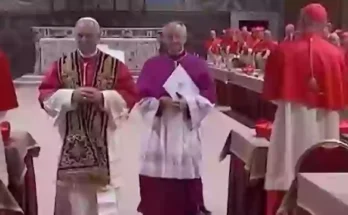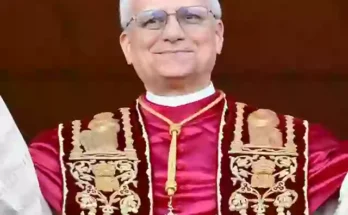Israel carried out heavy airstrikes on Gaza overnight, killing dozens of Palestinians, a day after launching a renewed ground campaign that broke the two-month-old ceasefire with Hamas.
At least 59 people were reported dead in the attacks, according to Gazan officials, adding to the hundreds of fatalities since Israel resumed bombing the region on Tuesday.
Israel blames Hamas for the renewed fighting, accusing the group of rejecting revised ceasefire terms. Hamas, on the other hand, has accused Israeli Prime Minister Benjamin Netanyahu of unilaterally ending the truce and putting hostages “at risk of an unknown fate.”
The ceasefire had briefly brought calm to Gaza and allowed the delivery of essential aid, as well as the exchange of dozens of hostages for hundreds of Palestinian prisoners.
On Wednesday, the Israeli military confirmed that it had initiated “targeted ground activities” in Gaza, partially regaining control of a key area. The Israel Defense Forces (IDF) stated that the goal of these operations was to “expand the security zone and create a partial buffer between northern and southern Gaza.”
“As part of the ground activities, the troops expanded their control further to the center of the Netzarim Corridor,” the military stated, referring to a critical Israeli-demarcated strip of land that divides Gaza, separating central Gaza City and northern Gaza from the southern regions bordering Egypt.
Hamas described the latest offensive as a “new and dangerous breach” of the ceasefire agreement. In a statement on Wednesday, the militant group emphasized its commitment to the ceasefire agreement it signed with Israel in January.
Israel’s ongoing war in Gaza has resulted in nearly 50,000 Palestinian deaths, predominantly women and children, according to the enclave’s health ministry. As the conflict resumes, the toll continues to rise.
The Civil Defense has also warned of an impending famine, as Israel’s nearly three-week blockade on humanitarian aid exacerbates the already dire conditions in the enclave.
As part of the January ceasefire deal, Israel had withdrawn from the Netzarim Corridor. However, despite the withdrawal, foreign military contractors have continued to oversee checkpoints between northern and southern Gaza.
Following the truce, hundreds of thousands of Palestinians traversed the corridor on foot, by car, and in some cases, by donkey, many returning to homes that had been destroyed after 15 months of Israeli airstrikes.
On Thursday, the Israeli military announced it was imposing a ban on Palestinian movement along the main route between northern and southern Gaza.

Israeli airstrikes on Tuesday killed over 400 people in Gaza, according to the enclave’s Health Ministry, making it one of the deadliest days of the war.
Defense Minister Israel Katz warned on Wednesday that Gaza’s residents would “pay the full price” if Israeli hostages are not returned and Hamas continues to govern the territory.
An Israeli official stated Tuesday that the airstrikes marked the first phase in a series of escalating military actions aimed at pressuring Hamas to release more hostages, signaling a return to Prime Minister Netanyahu’s stance that military pressure is the most effective method to secure their release.
To date, the Israeli military has successfully brought back only eight living hostages out of the 251 taken by Hamas and its allies on October 7, 2023. The majority of hostages were released as part of ceasefire deals in exchange for Palestinian prisoners.
UN Worker Killed
On Wednesday, the United Nations confirmed that one of their international aid workers was killed by an “explosive ordnance” at a UN guesthouse in central Gaza, with five others injured.
The Palestinian Ministry of Health in Gaza attributed the attack to the Israeli military, though the Israeli Defense Forces (IDF) denied this claim, asserting that no airstrikes were conducted near the guesthouse.
Jorge Moreira da Silva, head of the UN Office for Project Services (UNOPS), stated that the attack took place at a guesthouse in Deir al-Balah, frequently used by UN staff, which was known to the IDF and located in an isolated area with no nearby buildings. He added that the guesthouse had already been attacked multiple times this week, with previous near misses and hits. “It cannot be categorized as an accident,” he said, emphasizing that “attacks on humanitarian premises are a breach of international law.”

A spokesperson for the Israeli foreign ministry confirmed late Wednesday that a Bulgarian citizen working for the UN had died in Gaza, but it was unclear whether this individual was the same person mentioned in the UN’s statement.
Video footage from CNN at the scene showed a hole in the side of the building.
Trevor Ball, a former senior US Army explosive ordnance disposal team member who reviewed the footage, said that weapon fragments recovered from the scene were consistent with the M339, an Israeli tank projectile.
Ball also noted that the damage to the building matched the effects of a tank round, suggesting a direct hit.
N.R. Jenzen-Jones, director of Armament Research Services (ARES), who also analyzed the footage, confirmed that the “remnants appear to be from an Israeli 120 mm tank projectile, most likely the M339 multi-purpose model.”
CNN asked the IDF whether they were investigating the possibility that the strike was caused by Israeli tank fire. A spokesperson replied, “We have nothing to add at the moment. If new information arises, we will publish it.”
Fresh Protest
Meanwhile, the ongoing conflict drew thousands of protesters to Israel’s parliament, the Knesset, in Jerusalem. Critics of Prime Minister Netanyahu’s government accuse him of using the war to strengthen his fragile coalition.
Later on Wednesday, police clashed with demonstrators and arrested 12 people during an anti-Netanyahu rally in Jerusalem, according to a police statement. The protesters were voicing opposition to the prime minister’s plan to dismiss Shin Bet security service chief, Ronen Bar.
Video footage from the scene showed a line of police officers confronting a group of protesters. Officers were seen pushing demonstrators as they attempted to move them in a specific direction. Another image captured a police officer grabbing an elderly protester by the torso.
In their statement, a spokesperson for Israel Police said crowd-control measures were enacted after demonstrators “severely disrupted public order, including setting fires in the middle of the roadway, creating a significant risk to fellow protesters.”



